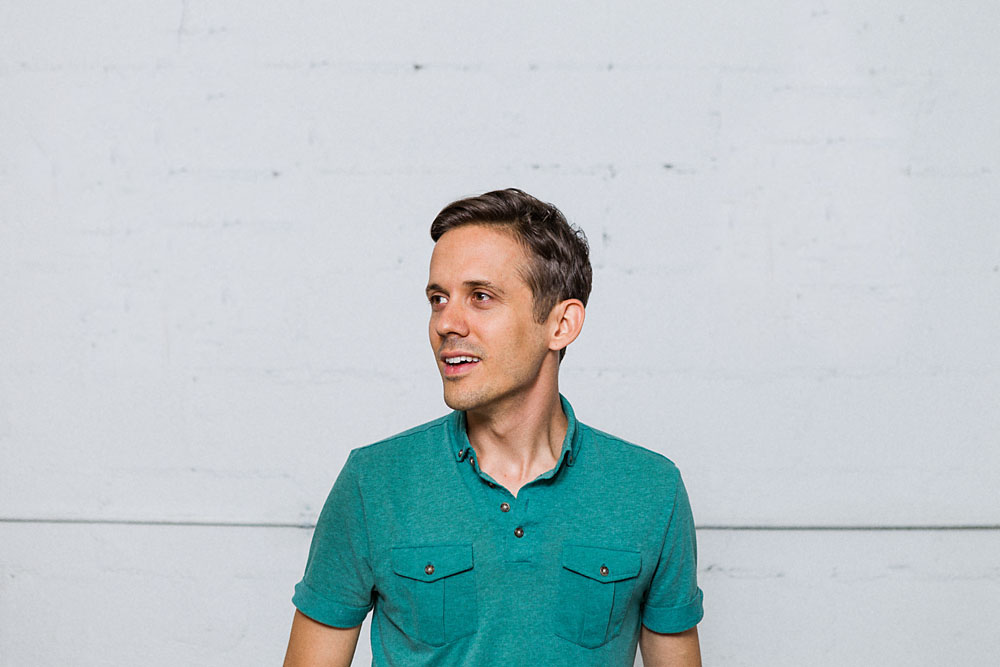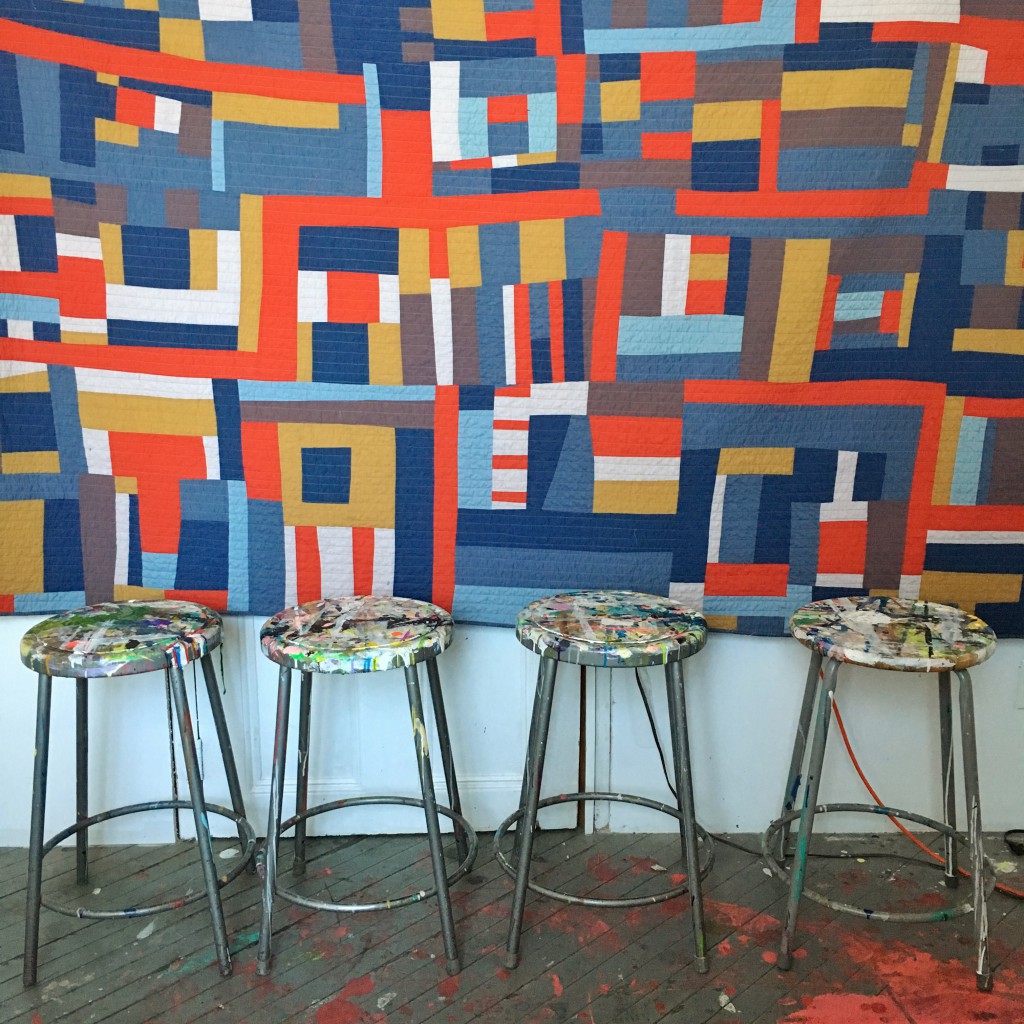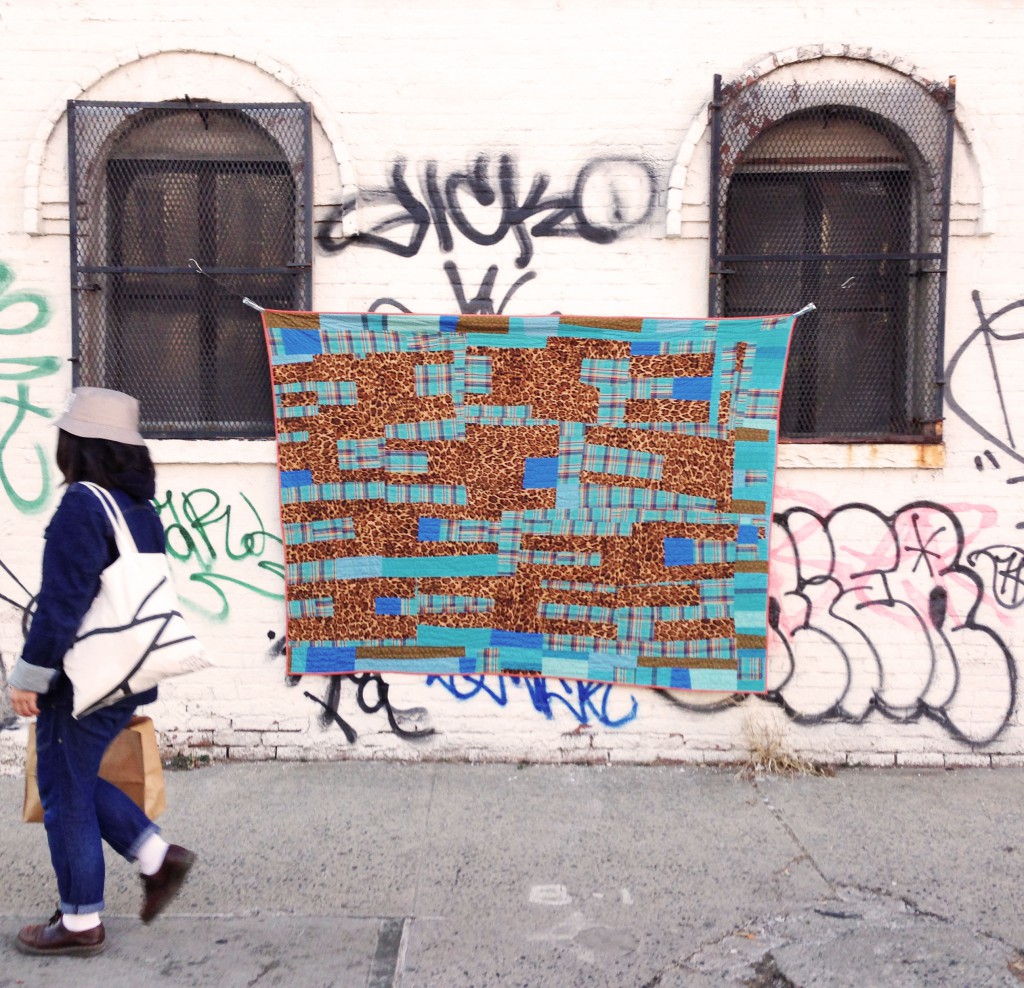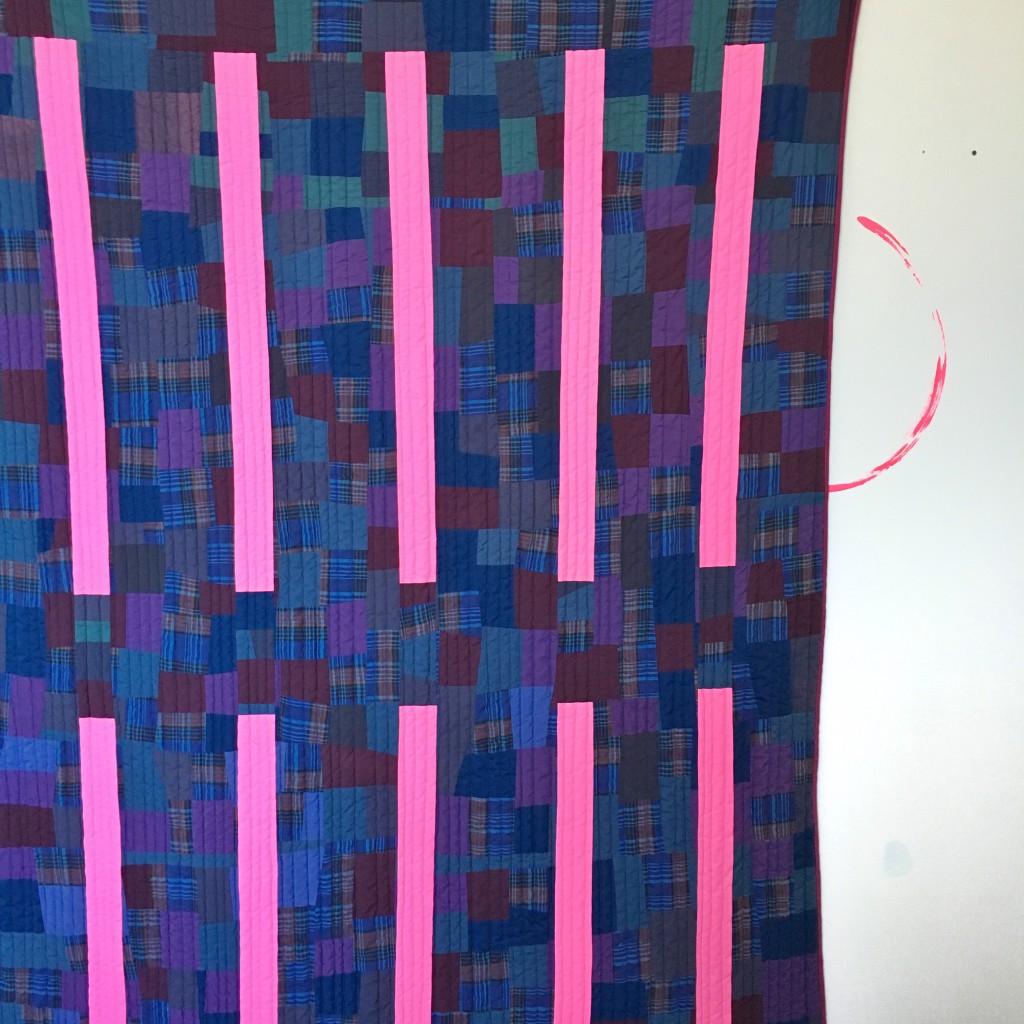I am so pleased to introduce Zak Foster this month in the ‘we are modern quilters‘ series. Based in Brooklyn, Zak is an incredibly talented modern quilter whose style I admire greatly. His greatest influence – the quilter’s of Gees Bend is evident, however, his own improvised style shines through in his portfolio of work. He also tackles social issues through quilting, his project 43 for 43 is a protest quilt for the 43 college students who were arrested by the police in Mexico and then never seen again. You can also check out the has tag #43for43 on Instagram to see more.
Read on to learn more about Zak and his great love of quilting – how he got started and where he is today.

Tell us about how you started quilting and how you found modern quilting.
I never knew any quilters growing up. It took me until I was thirty to meet my first quilter: Mamaw, my partner’s grandma. It was on one of my very first trips home to Tennessee to meet my partner’s family, Mamaw and I were chatting on the sofa in the kitchen and getting to know each other, when I happened to mention that I’d like to learn how to quilt. She immediately grabbed my arm, got a real serious look in her eye, and I just knew I must’ve put my foot in my mouth.
“Buddy,” she started, “you’re gonna have so much fun.” And it’s so true… I’ve been quilting ever since and having a blast! I had no idea how much I was going to enjoy quilting.
I made my first simple four-square patchwork piece in the third grade, which I took home and turned into a pillow, and then didn’t sew again for years. In college, my mom showed me how to use her old Elna sewing machine, and I made a quilt top out of old sheets, and then, discouraged by how wonky everything was turning out, I didn’t sew again for years. Finally, when one of my close friends told me they were going to have their first child, I decided it was time to get serious and make a quilt from start to finish.
I called Mamaw and she talked me through the basics. I watched a lot of YouTube videos and read a lot of blogs. (Elizabeth Hartman’s blog was a huge help.) And after many, many hours and more ripped stitches than sewn ones, I came out with a very unintentionally wonky baby quilt. It was a humble gift to give, but I was hooked. I saw so many possibilities for what we can do with fabric that I just kept thinking of something else I wanted to try, and so I’d make another quilt. About five years and forty quilts later, I still haven’t run out of things I want to try with quilting.
I can’t imagine being a quilter without social media. Which makes me laugh a little to say, because I’m sure if you were to ask an old-time quilter, they couldn’t imagine being a quilter WITH social media. But when I think back on it, every step of the way I was supported with the help that I got from other quilters online. On YouTube and blogs, I learned the basics of quilting. I got my work out into the world thanks to Etsy. Instagram connected me to an entire community of quilters that continues to inspire me everyday. With the help of Kickstarter, I was able to raise over $12,000 and invest in a long-arm machine to grow my business. And here we are now on your blog! I honestly can’t imagine what my journey as a quilter would have looked like if it weren’t for social media. I think I would’ve had to have moved to Lancaster County!

What does it mean to you to be a modern quilter and a modern man?
Before I started sewing, I always thought quilts were so… quaint. Even though I grew up in a household that encouraged artistic expression, I didn’t know any quilters, and I just assumed it was a bunch of old ladies sitting around a quilt frame in the stale basement of some Baptist church somewhere sewing the same patterns they’d been sewing for generations.
When I first saw the quilts of Gee’s Bend, I think like a lot of people, my eyes were opened to the flexibility of quilting. Some of their quilts honored traditional patterning. And some quilts broke that mold and did something else entirely. Their colors and forms were inspired, but more than that, it was their insistence that a quilt didn’t have to be technically perfect to be beautiful, that 90-degree angles and perfectly matching corners weren’t a requirement for a great quilt. That a quilt didn’t have to be a SQUARE was a revelation to me!
Seeing the ladies of Gee’s Bend flex the artform in this way liberated my idea of quilting. I dusted off my sewing machine and began experimenting with color and form in a way for me that felt more personal than patterned. One of the questions I ask myself when I’m designing is “What about this quilt can only come from me and no one else?” The folks of Gee’s Bend worked with the materials they had, so what does this mean for a quilter living in a place like New York City in 2015 where you have every type of fabric at your disposal?

Which quilt that you have made represents you and why?
The quilt that most captures that idea for me is the Bermuda Run quilt, or what I call privately Honey, There’re Leopards in the Pool Again. From the outset, I wanted to make a quilt in which the only design calculus I used was what pleased me, or what the sculptor Anne Truitt would say gave her a “spontaneous rise of [her] whole being”. . I tried to block out of my mind what others might think of it, or how well it would sell on Etsy, and just go with my gut. I had this beautiful photo-realistic leopard print fabric that I knew I wanted to use, and I paired that with a blue plaid I’d bought back in Chattanooga one Thanksgiving. And then I just played around until I was happy. I finished it off by hand-quilting it in metallic gold thread. It’s a thing of beauty! (…that never gets any favorites on Etsy, but who cares… I love it!)

How do you connect with other modern quilters?
More than fabric and design though, modern quilting for me means connecting to the world around us. Quilting is such a beautiful traditional art, but if we leave it at that, we’re not tapping into its fullest potential. More and more I think of quilting like an energy source, and I think of all the time and passion that we pour into a project, and I can’t help but wonder if we can utilize that as an engine to promote change and social justice. I don’t know exactly what this looks like yet, but I’d love to talk with people who are interested in getting quilts off the bed and into the streets. When I watch the news night after night and hear about the pain and injustice that only seems to be spreading around the world, I wonder how quilting and the arts can provide a solution. Art can bring beauty to bear on the pain. It can help us be okay with getting closer to the pain to see how we might be able to help. I know when I hear of another mass shooting, or another bombing, or another stampede, my first gut response– like that of many quilters, I believe– is to want to make a quilt to bring comfort to those affected.
But there has to be more we can do as quilters. We live our lives wrapped in fabric. How can we use quilts to document what’s happening in the world around us? How can we use that fabric to bring what’s happening on the other side of the world to our own neighborhood? How can we use that fabric to see that the people affected by these injustices today could easily be us tomorrow?
We live in an ever-connected world, but that connection is largely digital. Quilting offers us a connection we can feel, and what we feel, we understand. I think in there somewhere lies the power of the quilt in the modern world.
Want to connect with Zak?
Over to you. Have you used quilting to bring comfort and heal wounds? Leave us a comment below and tell us about your story.